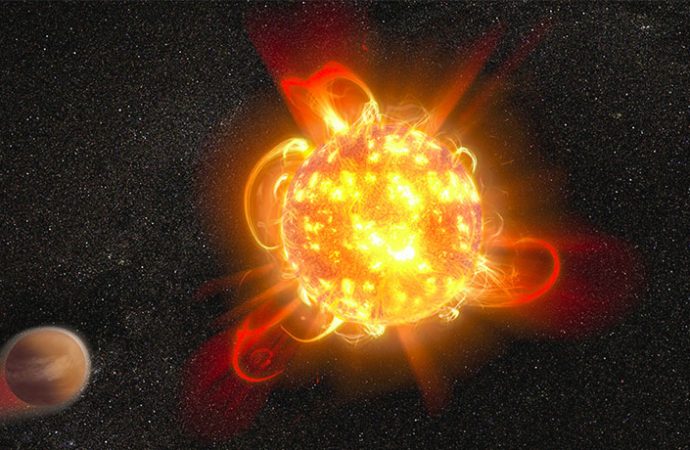The finding suggests the outburst of stellar energy are more common than scientists thought
Source: Science News
It isn’t only young stars that spit high-energy superflares. Older stars, such as the sun, can also send out bursts of energy that could be powerful enough to strip away planetary atmospheres in close orbit, researchers report.
Such superflares can be seen from hundreds of light-years away. Astrophysicists had assumed that only young stars had these outbursts. But a team of researchers has documented superflares erupting from middle-aged stars, each with a similar temperature and radius to the sun. These massive flares can be at least 100 to 1,000 times as powerful as the average solar flares that Earth normally experiences.
But flares from these older stars are rare. “We have found superflares erupting once every 2,000 to 3,000 years in sunlike stars,” says study coauthor Yuta Notsu of the University of Colorado Boulder, who presented the findings June 10 at the American Astronomical Society meeting. By contrast, superflares from younger stars erupt much more frequently, about once every few days.
Using data from the Kepler space telescope, Notsu’s team looked at about 90,000 stars and found 300 that together produced more than 1,000 superflares over 500 days of observation. Adding data from the Gaia space telescope, the team whittled the group down to just 113 stars with a sunlike size and temperature.
With further analysis, the researchers narrowed their field to include only stars with slow rotations, an indication of older age. By comparing superflare frequencies with star age, the scientists predict that the roughly 4.6-billion-year-old sun might experience a superflare 100 times as strong as normal flares in the next 1,000 years. The team also reported the findings May 3 in the Astrophysical Journal.
Such a relatively small superflare would still likely be extremely damaging to society on Earth, knocking out power grids, communication satellites and other electronic systems. Even smaller but still powerful events could occur more frequently and also cause damage, the researchers say.
The closest the Earth may have come to a superflare in the recent past was the 1859 solar flare known as the Carrington Event, which hobbled telegraph stations worldwide. Historical data from tree rings and ice cores suggest that two small superflares erupted and hit Earth in roughly A.D. 774 and A.D. 993.
Astrophysicist Bradley Schaefer of Louisiana State University in Baton Rouge says that the research shows that “superflares can lie on a continuum with our solar features.” Still, a superflare from the sun “would be very rare … and it would be low end.”

































Leave a Comment
You must be logged in to post a comment.